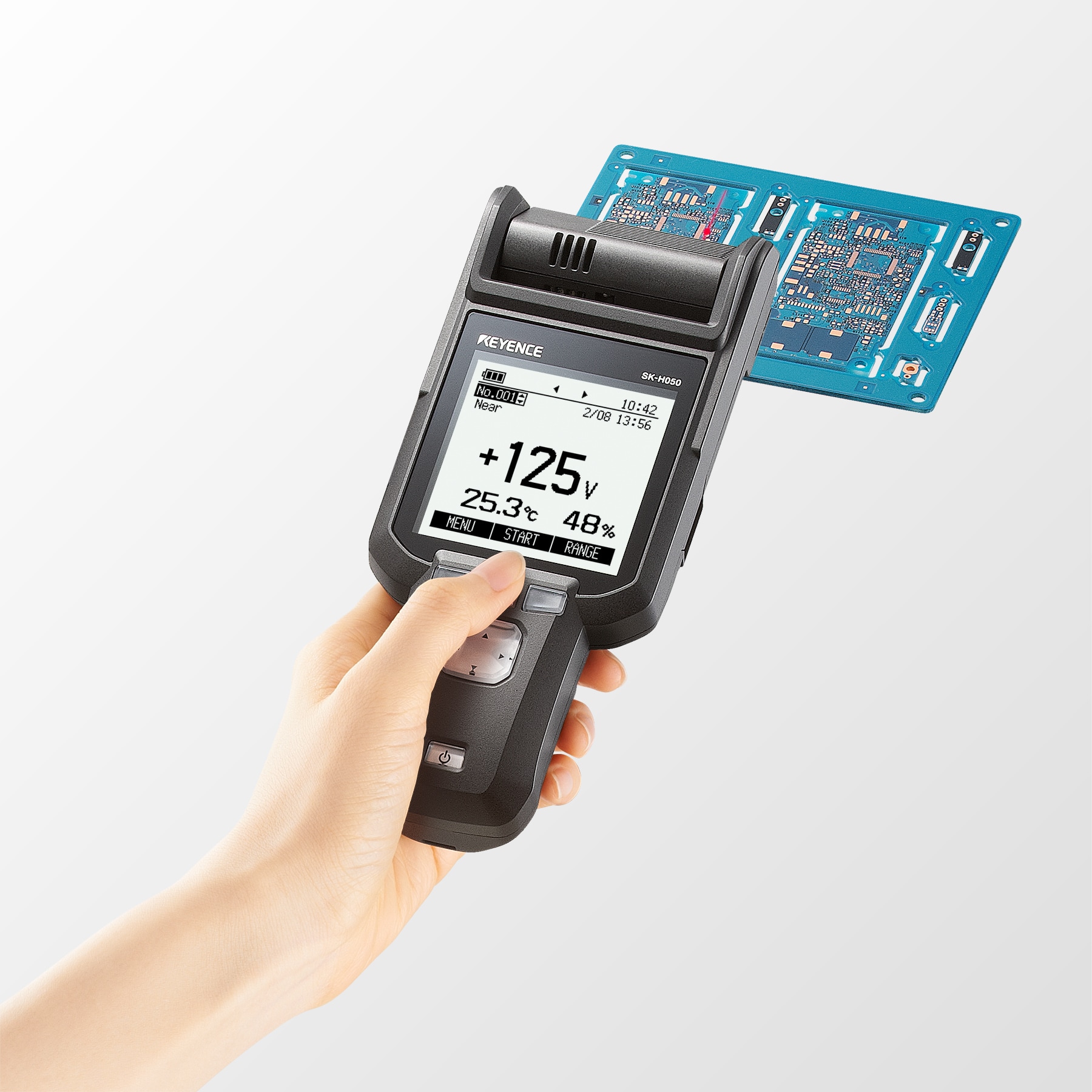
Electrostatic Sensor
SK-H series
-
Simultaneous measurement of static electricity, temperature, and humidity
-
Supports switching between high-accuracy mode and wide-range mode
-
Equipped with a charge monitor function
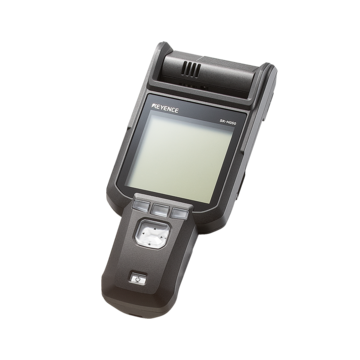
KEYENCE’s hand-held type electrostatic sensor is widely used as an entry-level model for quantifying electrical charges of static electricity. It can also measure temperature and humidity, making it possible to comprehensively understand the relationship between environmental conditions and static electricity. In addition, it can evaluate the static elimination performance, such as speed and ion balance, of ionizers. In this way, this sensor promotes the effective operation and maintenance of ionizers while also helping prevent static electricity problems. This hand-held sensor allows for flexible measurement in any location, giving it the major advantage of supporting diverse needs in on-site applications.
Features
STATIC ELECTRICITY + HUMIDITY Simultaneous Measurement
Measuring static electricity and humidity simultaneously makes it possible identify likely areas of static-related problems, paving the way for optimal static electricity solutions.
In addition, the humidity in the "area around the equipment" may be lower than that at the "room edge" because of the higher temperature. If static electricity problems persist despite humidity control throughout the room, checking the humidity "around the equipment" may help to resolve the problem.
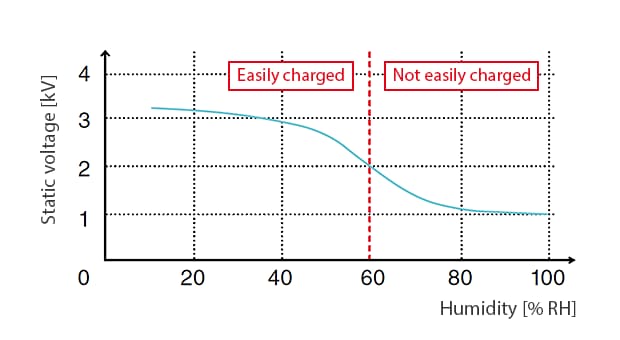
Relationship between humidity and static charge (typical example)

Example of different humidity between the edge of a room and near the equipment
Determines the Static Elimination Performance and Deterioration Over Time of an Ionizer
The SK-H050 features a charge monitor function that measures static elimination speed and balance, both of which indicate an ionizer's static elimination ability.
* Required ionizer monitoring unit SK-H055 sold separately.
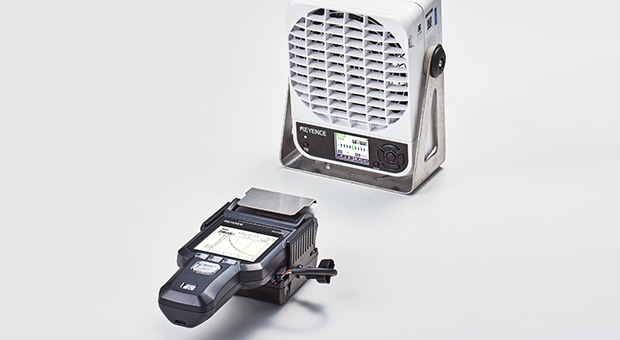
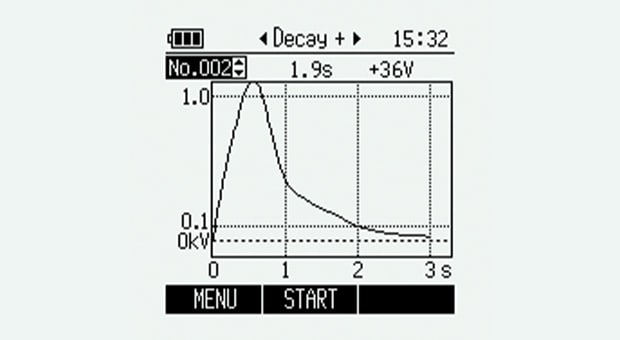
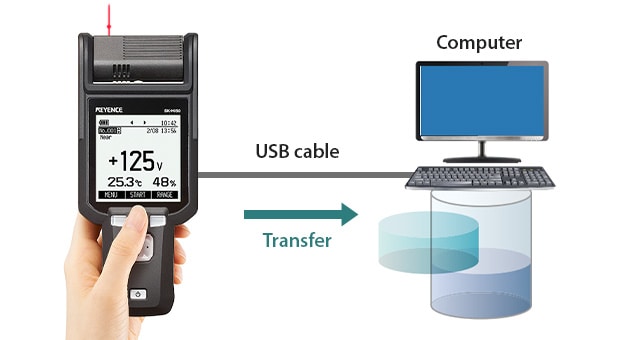
Records Measured Data in the Sensor
Up to 100 pieces of measured data can be recorded in the sensor’s internal buffer memory. Recorded data can be transferred via a USB cable to a PC where it can be saved as CSV data.
* The PC software is available as a free download.
Head Structure That Makes Measurement Easy
180-Degree Rotating Head for Flexible Measurement
The measurement unit uses a floating structure with 180° rotation. As well as making it easy to take measurements, even in tight spaces, it also boasts improved shock resistance with any shock originating from it being dropped not being directly conveyed to the sensor.
Laser Pointers to Find the Reference Distance
The optimum measuring distance is indicated by the two laser pointers, enabling even more accurate measurement.


